The first teeth your baby will get are usually the lower central incisors, which typically come in between 6 to 10 months of age. You might notice some signs of teething, like increased drooling and gum swelling, as those little teeth start to erupt. Following the lower incisors, the upper central incisors usually appear around 8 to 12 months. It's important to keep an eye on your baby's development and consult a pediatrician if you have concerns. By monitoring these changes, you can better prepare for your baby's oral health journey ahead. Want to discover more about the teething process?
Key Takeaways
- The first teeth to emerge in babies are the lower central incisors, typically appearing between 6 to 10 months.
- Following the lower central incisors, the upper central incisors usually erupt between 8 to 12 months.
- Upper lateral incisors typically come in between 9 to 11 months, followed by lower lateral incisors around 10 to 12 months.
- By age 3, most children will have a total of 20 primary teeth, including molars and canines.
Understanding Teething
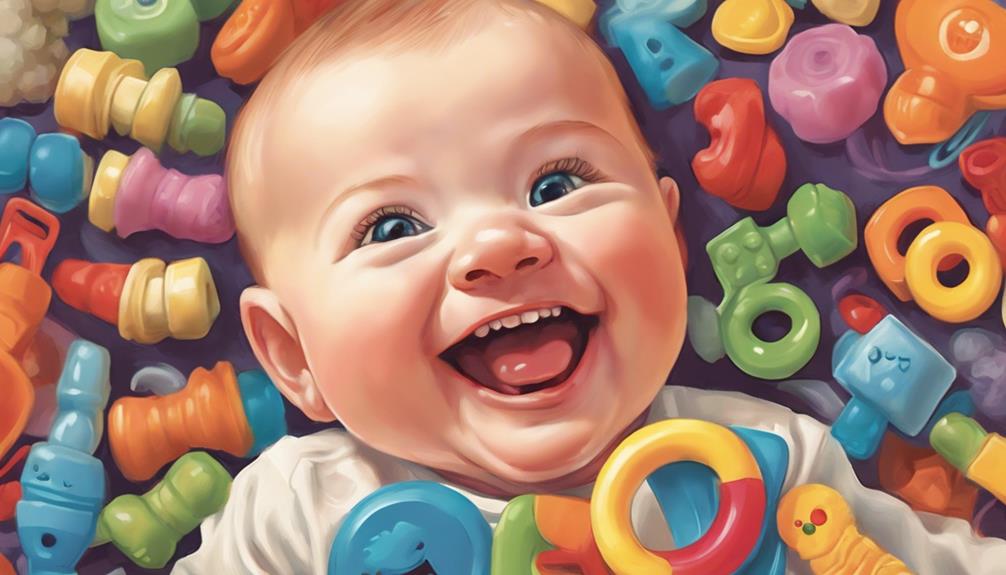
Teething can be an uncomfortable milestone for your baby, usually starting between 4 to 7 months of age. It's important to understand what's happening during this time.
The first teeth to come in are typically the lower central incisors, which usually emerge around 6 to 10 months. This process can bring on teething pain, causing your baby to feel fussy and irritable.
After the lower central incisors, you'll often see the upper central incisors appear about 4 to 8 weeks later. These baby teeth, also known as primary teeth, play a significant role in your child's development. They help with chewing and speaking and maintain space for future adult teeth.
As you navigate this teething phase, keep an eye out for signs like drooling, gum swelling, and changes in sleep patterns. These can indicate that your baby is experiencing discomfort due to their first teeth coming in.
Understanding the teething process can help you provide the right support, making this milestone a little easier for both you and your baby.
Teething Timeline
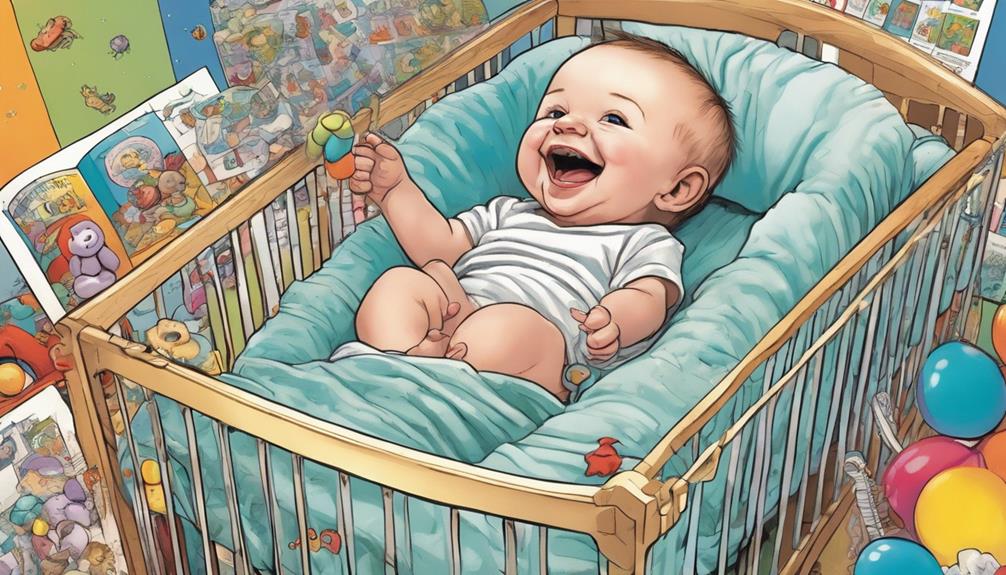
When it comes to your baby's teething timeline, you can expect the process to start around 4 to 7 months, though some might begin as early as 3 months.
The first teeth to pop up are usually the lower central incisors, followed by the upper central incisors.
Keep in mind that every child is different, so the timing of tooth eruptions can vary widely.
Typical Teething Age Range
Most babies start showing their first signs of tooth eruption between 4 to 7 months of age. During this teething phase, you'll likely notice fussiness, drooling, and a desire to chew on objects. The first tooth that typically emerges is the lower central incisors, usually appearing around 6 to 10 months. You might find that your baby's discomfort peaks during this time, so keeping teething toys handy can help soothe their sore gums.
After the lower central incisors, the upper central incisors generally make their debut about 4 to 8 weeks later, between 8 to 12 months. This age range can vary from baby to baby, but understanding the typical teething timeline helps you prepare for what's next.
As your little one progresses through teething, they'll continue to develop their teeth, with lower lateral incisors arriving around 10 to 12 months. By age 3, most children will have all 20 primary teeth, which are essential for chewing, speaking, and creating space for future adult teeth.
Order of Tooth Eruption
Typically, babies' teeth emerge in a specific order, starting with the lower central incisors around 6 to 10 months. This is often when you'll notice your baby's first tooth popping through! Understanding the order of baby teeth can help you track teething progress and prepare for your little one's first set of teeth.
Here's a quick look at the order of tooth eruption:
- Lower central incisors: 6 to 10 months
- Upper central incisors: 8 to 12 months
Next, the lower lateral incisors typically come in around 10 to 12 months after the central incisors. By the age of 3, most children will have all 20 primary teeth.
It's a fascinating journey as your baby's mouth transforms during this teething phase. Keeping track of the order of baby teeth can aid in recognizing the signs of teething and addressing any discomfort your child may experience.
You'll be amazed at how quickly those little teeth start to come in!
Individual Variability in Timing
Teething timelines can vary widely among infants, with some starting as early as 3 months while others may not see their first tooth until nearly a year old.
Typically, you'll notice that the first teeth to emerge are the lower central incisors, usually appearing between 6 to 10 months. After those, the upper central incisors follow, generally coming in around 8 to 12 months.
This variability in the teething process is influenced by individual factors, such as genetics and environmental conditions. It's important to remember that every baby is unique, and there's no one-size-fits-all timeline for when those baby teeth will begin to erupt.
As a parent, you should monitor your child's growth patterns closely. If you notice significant delays in tooth eruption or any unusual symptoms, it's a good idea to consult your pediatrician.
Understanding that teething can be a varied experience can help you navigate this milestone with more confidence. Just remember, whether your baby gets their first tooth at 3 months or closer to a year, they'll eventually get those all-important baby teeth!
First Teeth to Erupt
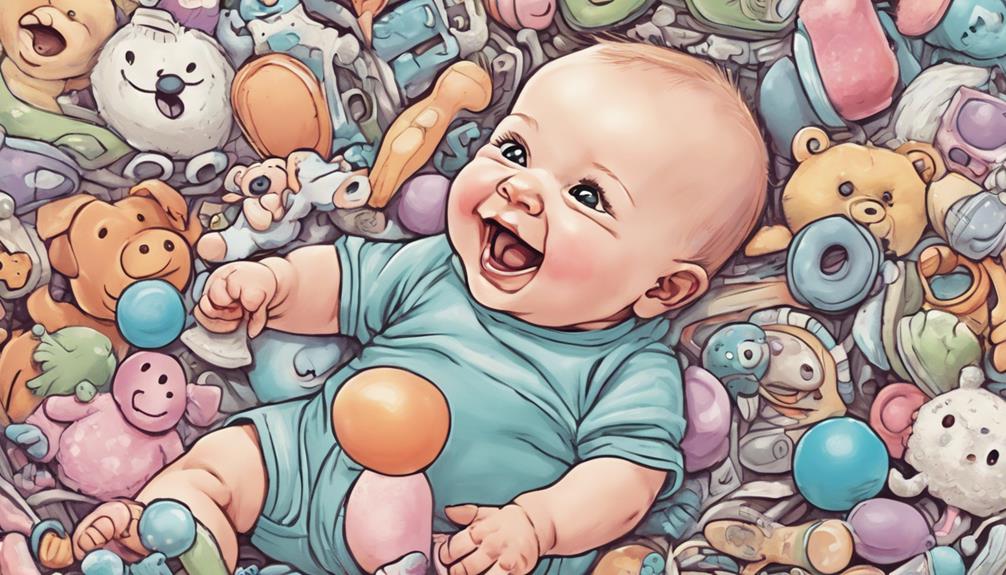
When it comes to your baby's first teeth, the order they erupt can be quite fascinating.
Typically, you'll see the lower central incisors making their appearance first, followed by the upper ones.
However, keep in mind that the timing can vary from one infant to another, so your baby mightn't follow the exact timeline.
Eruption Order Overview
The first teeth that usually come in for a baby are the lower central incisors, appearing between 6 to 10 months of age. This marks the beginning of the teething journey, and you might notice your little one feeling a bit fussy during this time. Understanding the eruption order of their milk teeth can help you prepare for what's next. Once the lower central incisors come in, the upper central incisors usually follow shortly after, between 8 to 12 months. This is just the beginning of the baby teeth eruption timeline, which can continue until around age 3. It’s important to monitor your child’s teething progress and check for any signs of discomfort or unusual patterns in their tooth eruption.
After the lower central incisors, you can expect the following teeth to emerge:
- Upper central incisors: These typically appear between 8 to 12 months.
- Upper lateral incisors: These come in between 9 to 11 months.
As your baby continues to grow, the first molars will erupt between 13 to 19 months, followed by canines from 16 to 22 months, and second molars between 25 to 33 months.
Each step in this eruption order is essential for their oral development. So, keep an eye on those first teeth, as they'll pave the way for a healthy smile in the future!
Timing Variability Among Infants
While most babies follow a general timeline for tooth eruption, there's considerable variability in when those first teeth actually come in. You might notice that some infants get their lower central incisors as early as 6 months, while others may not see them until 10 months. This timing variability can be surprising, especially when you're comparing your baby's dental development to others.
Here's a quick overview of the typical timing for the first baby teeth to erupt:
| Teeth Type | Eruption Age (months) |
|---|---|
| Lower Central Incisors | 6 to 10 |
| Upper Central Incisors | 8 to 12 |
| Lower Lateral Incisors | 10 to 12 |
Most children will have all 20 primary teeth by age 3, but the timing of tooth eruption can differ greatly among infants. So, if your little one's teeth come in a bit later or earlier than average, don't worry—this is perfectly normal! Just keep an eye on their overall dental health as they grow.
Signs of Teething
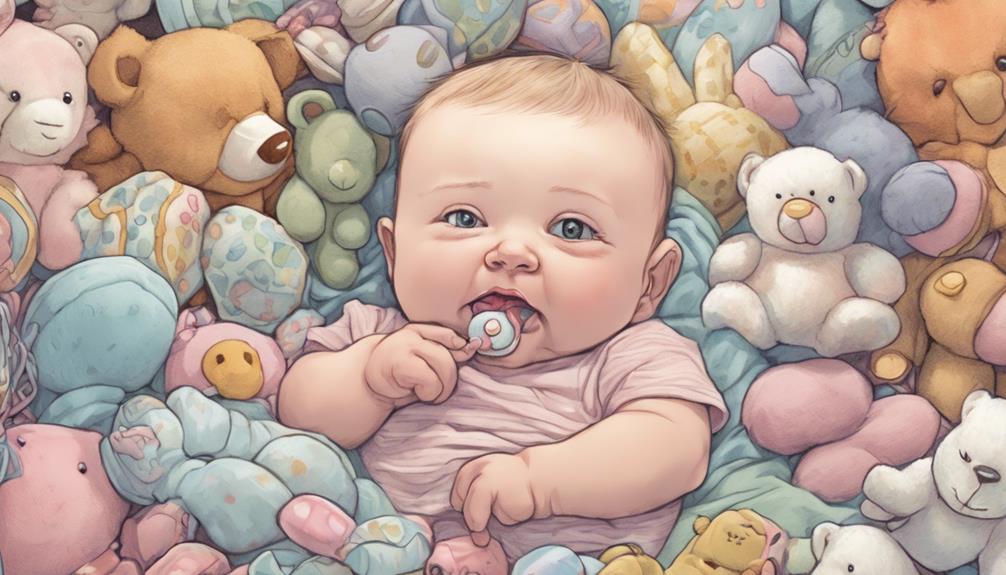
Teething often shows up with signs like increased drooling, a strong urge to chew on objects, and mild fussiness. When your baby is teething, you might notice some specific signs of discomfort that can indicate those first teeth are on their way. The most common indicators include:
- Swollen and tender gums
- Changes in sleeping patterns
Typically, teething starts around 4 to 7 months, with the lower central incisors emerging between 6 to 10 months. You may see your baby reaching for teething rings or other objects to chew on, as this helps soothe their sore gums.
While slight temperature elevations can occur, a true high fever usually points to other health issues rather than teething.
Keep an eye out for these signs, as they can help you understand what your little one is experiencing. Remember, every baby is different, and some might show no signs of discomfort at all. Being aware of these signs can help you provide comfort and support during this important developmental milestone.
Easing Teething Discomfort
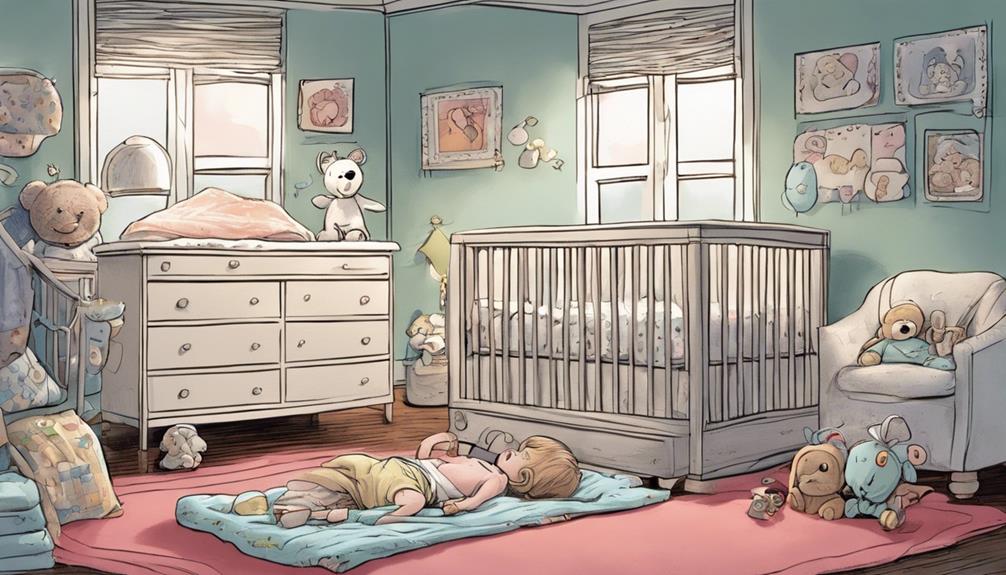
To help soothe your baby's discomfort during this challenging time, consider various methods that can provide relief from teething pain. You can gently massage your baby's gums with a clean finger for immediate relief. Chilled teething rings or frozen washcloths can also effectively soothe sore gums, making them great choices.
Here's a quick reference table for relief options:
| Method | Description |
|---|---|
| Teething Rings | Chilled rings provide cooling relief. |
| Teething Gels | Consult your pediatrician before using gels. |
| Teething Biscuits | Supervise to prevent choking; verify they're safe. |
While teething discomfort can lead to a mild rise in temperature, true fever usually indicates illness rather than teething. Remember, teething is painless for some babies, but others may experience discomfort. If you're unsure about any symptoms or pain relief options, it's always best to consult your pediatrician. Avoid using teething gels with benzocaine if your infant is under 2 years old, as safety is paramount during this time.
Oral Care for Infants

Establishing good oral hygiene for your infant early on is essential for their long-term dental health. Start cleaning your baby's gums with a soft, damp cloth even before their first tooth appears.
Once the teeth begin to erupt, it's time to brush your baby's teeth. Use a soft-bristled toothbrush and a smear of fluoride toothpaste. As they grow older, shift to a pea-sized amount.
To promote ideal dental health, follow these tips:
- Brush your baby's teeth twice daily—after breakfast and before bedtime.
- Schedule your child's first dental visit by their first birthday or within six months of their baby's first tooth.
Importance of Fluoride

Good oral care for your infant doesn't stop with brushing; fluoride plays an essential role in protecting their developing teeth from decay. This mineral strengthens tooth enamel, making it more resistant to cavities and other forms of tooth decay.
Most public water supplies now contain added fluoride, which can greatly reduce the risk of dental caries in children.
Starting around 6 months of age, it's typically recommended to introduce fluoride through drinking water, often using sippy or straw cups. Be sure to consult your pediatrician about your child's specific fluoride needs, as many bottled waters lack sufficient fluoride for ideal dental health.
Additionally, your pediatrician may suggest applying fluoride varnish to your child's teeth as soon as they erupt. This quick treatment enhances their protection against decay, ensuring those precious developing teeth stay healthy.
Safe Teething Products
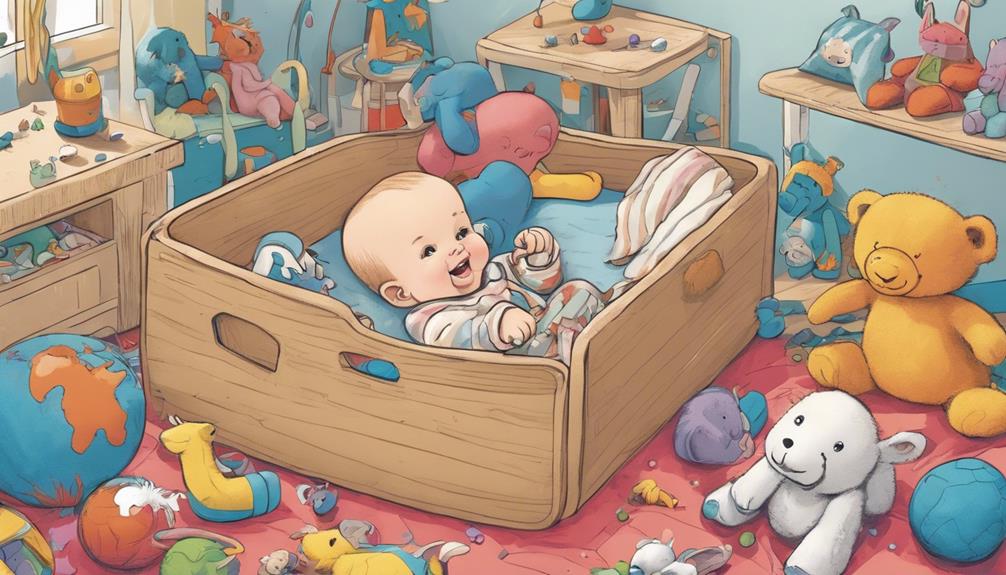
Choosing safe teething products for your baby can help soothe their discomfort while ensuring their health and safety. When selecting items, keep in mind the materials and potential choking hazards. Here are some options that are both effective and safe:
- Teething rings made from BPA-free materials can provide a comfortable, chewable surface without harmful chemicals.
- Chilled teething rings or cold washcloths can effectively soothe sore gums, but steer clear of those filled with liquid to avoid leaks and choking hazards.
It's essential to avoid products like teething tablets containing belladonna or benzocaine, as these can pose serious risks.
Before trying any new remedies, it's always a good idea to consult your pediatrician for guidance.
When to See a Dentist
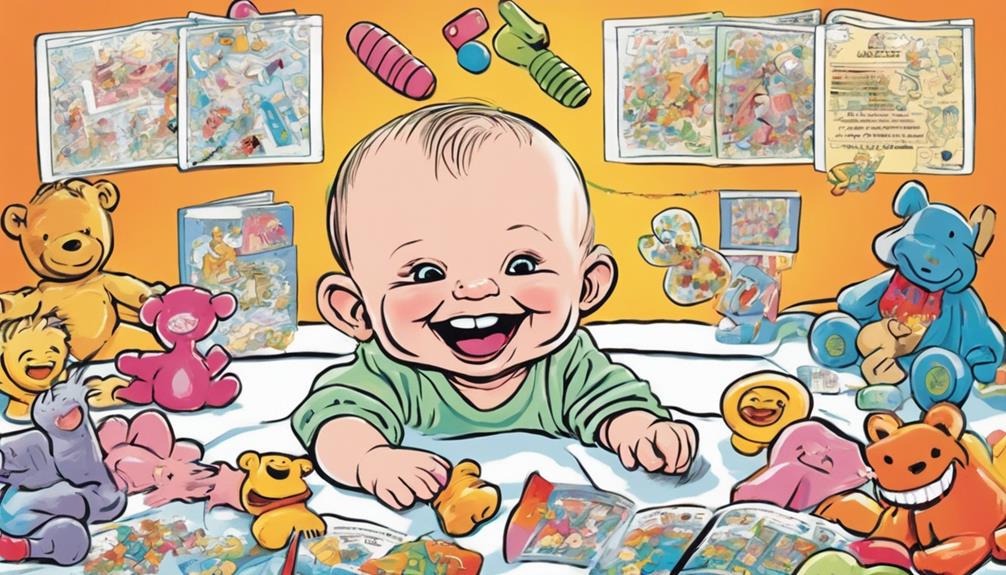
Scheduling your child's first dental visit by their first birthday is essential for monitoring their dental health and development. This visit should ideally happen within six months after the first tooth erupts.
Pediatric dentists can guide you on teething discomfort, helping you manage any issues that arise during this stage. Early visits are important for establishing a dental home, making your child more comfortable with dental care as they grow.
Regular check-ups allow the dentist to identify potential issues, such as misalignment or decay, before they become serious problems. If your child shows signs of severe or prolonged teething discomfort, it's important to consult a dentist.
This could indicate other health concerns that need addressing. By prioritizing these early visits, you're not only ensuring your child's teeth develop properly but also fostering a positive attitude toward dental care.
Frequently Asked Questions
What Order Do Teeth Come in for Babies?
When teeth start coming in, you'll notice the lower central incisors first, followed by the upper central incisors. Then, the lower lateral incisors appear, leading to the upper lateral incisors, and so on.
Which Teeth Should Come First in Babies?
You might think all babies get their teeth in the same order, but it's not true! Typically, the lower central incisors emerge first, followed by the upper central incisors. It's fascinating how each baby varies!
What if Baby Gets Side Teeth First?
If your baby gets their side teeth first, it's usually not a concern. Just keep an eye on their overall dental health, maintain good hygiene, and schedule that first dental visit by their first birthday.
When Do Teeth Come in a Chart?
Ever wonder when those tiny teeth make their grand entrance? Typically, you'll notice a pattern: it starts with the lower central incisors around 6-10 months, followed by others in a delightful sequence.
What are the Common Signs of Teething in Babies?
When it comes to the baby teeth eruption sequence, there are some common signs of teething to look out for. These can include increased drooling, irritability, swollen gums, and the urge to chew on things. Some babies may also experience a slight fever and have trouble sleeping during this stage.
What Are the Common Signs of Teething in Babies?
When it comes to babies’ first teeth development, there are some common signs of teething to watch out for. These can include increased drooling, irritability, swollen gums, and the desire to chew on things. Some babies may also experience changes in appetite and disrupted sleep patterns during this time.
Conclusion
In the grand symphony of your baby's growth, teething marks a significant crescendo.
As those first tiny teeth emerge, you're witnessing a beautiful transformation.
With a little patience and love, you can ease their discomfort and nurture their smile.
Remember, every tooth is a stepping stone to their unique journey.
Keep an eye out for signs, and don't hesitate to seek advice when needed.
Embrace this fleeting phase—before you know it, they'll be flashing a dazzling grin!









